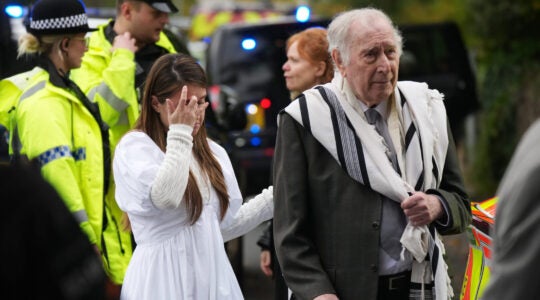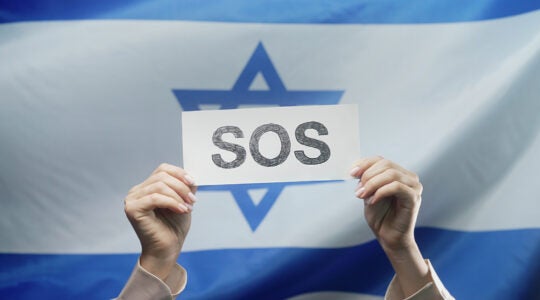“The history of every people fixes its eye upon a particular moment in which its qualities and attributes shine forth with special radiance,” wrote Abba Eban in 1952. For us, “the time was the sequel to the Second World War, which left the Jewish people battered and bleeding…. Here was a people which had seen six million of its kinsmen butchered and slaughtered in Europe. The institutions of Jewish life and culture lay about them in ruin…. Any observer would have been forgiven for thinking that this must be the end of the tormented journey of the Jewish people across the face of history. How could any people under the impact of such a blow…summon out the energy with which to survive, still less the special resilience required to exhort its life to new levels of achievement and of sacrifice…. Yet within three years of that lowest point in Jewish fortunes, the whole Jewish commonwealth had been re-established after 2,000 years, its flag fluttered in the great circle of banners which symbolized the freedom and equality of all peoples on earth…. Jewish history in our lifetime will forever be dominated by this most fantastic transition from the depths of paralyzing despair to unexpected pinnacles of sovereignty, pride, and achievement.”
Every year at this season I am reminded of Abba Eban’s soaring words. That “most fantastic transition” is one we cannot help recall these days between Yom Hashoah and Yom Ha'atzmaut, Holocaust Remembrance Day (May 5) and Israel Independence Day (May 12).
The name assigned the intervening sedra, too, seems to reflect the transitional moment. In the biblical narrative Achare Mot, “after the death,” refers to events succeeding the punishment of Aaron’s sons Nadav and Avihu for disobeying the sacrificial laws. But in the context of the Jewish calendar, “after the death” might recall the death of the six million at the hands of the Nazis and the event that soon followed — the birth of the State of Israel. Remembrance of the two surrounds us now.
Historians may long debate the causal link between the Holocaust and Israel’s founding. The Jewish state does not require the tragedy of the Shoah to justify its existence: our people’s presence on the land dates back 3,000 years at least. But the two events are bound together in our postmodern consciousness. And those of us who seek meaning in history understand that what was true sixty-eight years ago remains true today: the enduring menace of anti-Semitism necessitates a Jewish homeland.
What has changed is the nature of anti-Semitism. As CUNY’s Jerome Chanes explained in a Jewish Week essay (“Anti-Zionism, Anti-Semitism And The Line Between Them,” Opinion, April 29), in previous decades anti-Jewish sentiment found open expression largely in cultural and religious terms with the targets Jews themselves. Today anti-Semitism often hides under the veil of political ideology with Israel as the surrogate target. Sadly, Eban’s “most fantastic transition” remains incomplete. Israel’s flag may flutter amongst others, but often it flies at the center of the world’s censure for alleged human rights violations and disproportionate military response to attack while the brutality of the world’s dictators generally goes ignored.
Certainly there are legitimate criticisms of Israel. I will be the first to denounce its policies of settlement expansion on the West Bank and construction in East Jerusalem. I will be the first to admit the state has failed to live up to the ideals expressed in its Declaration of Independence that all citizens regardless of religion be treated equally: Arab Israelis are not; neither are non-Orthodox Jews. And I concede, reluctantly, that Prime Minister Netanyahu does not appear much interested in bringing Israel back to peace negotiations.
But we must also acknowledge, emphatically, that President Mahmoud Abbas seems no more inclined. Rather, he and his Palestinian Authority incited much of the terrorist violence of the last nine months, peddling the lie that Israel seeks to change the status quo on the Temple Mount and even destroy the Al-Aqsa Mosque, and charging Israel with murdering Palestinian children.
So when the Jewish state is singled out for repeated condemnation in the United Nations, in the media, and on college campuses and held to a standard different than other nations, how should one attribute the injustice to anything other than anti-Semitism? As Chanes argues, “the assertion that Jews may not defend themselves as may any other people or person” challenges “the legitimacy of a Jewish historical identity.”
Today the “new” anti-Semitism rears its ugly head on campus quads far and near. Last year at Stanford and UCLA, supporters of Israel were accused of dual loyalty in campus elections. The situation reached the point where in March the University of California Board of Regents had no choice but to denounce formally “anti-Semitism, anti-Semitic forms of anti-Zionism and other forms of discrimination” on its campuses. Recently at both CUNY and NYU, graduate student unions called on their universities to punish Israel with academic boycotts. Thankfully CUNY Chancellor James Milliken and NYU President Andrew Hamilton refused. Hamilton was particularly forceful in his repudiation. But at NYU, the controversy has grown especially corrosive with accusations of a “Zionist conspiracy.”
Rapidly growing anti-Israel groups like Students for Justice in Palestine and Jewish Voice for Peace cloak themselves in the language of righteousness. In certain instances, social justice movements Jews historically supported and still do have been co-opted by these anti-Israel organizations which seek to equate Israel with oppression. Last year SUNY Albany was the scene of a rally billed “From Ferguson to Palestine.”
One university student body after another is haunted by this new anti-Semitism. One academic discipline after another is stained by it. Beyond the quad, inside the academic buildings, intellectual dishonesty and political motivation too often color interpretation of history. My friend Richard Shweder is a cultural anthropologist at the University of Chicago and a leader in the effort to counter BDS. And he is fighting a tough battle: “The pro-boycott activists are galvanized,” he explains. “They have the courage of their conviction that Israel is a neo-colonial apartheid regime and its academic institutions complicit in the activities of the State. They view anthropology as a platform for political engagement and postcolonial social critique. They argue that Israel is a predacious Goliath undeserving of international support.”
The boycott-divestment-sanctions movement threatens to isolate the Israeli academy from its American and European counterparts. In 2013 the American Studies Association and the Association of Asian American Studies joined. This past year the American Historical Association refused. This month the American Anthropological Association takes up the debate.
Organizations like Hillel and the American Jewish Committee and StandWithUs are fighting back. And legislation at the federal and state levels has been introduced, and in some instances passed, not only condemning BDS but also affirming the right of state and local governments to dissociate their own contracts and pension plans from organizations supporting the movement. But it has become a struggle akin to “whack-a-mole,” with no end in sight.
So as we stand at this transitional moment between Yom Hashoah and Yom Ha’atzmaut, we must acknowledge that Eban’s “most fantastic transition” remains incomplete.
Rabbi Joshua M. Davidson is the senior rabbi of Congregation Emanu-El of the City of New York.
The New York Jewish Week brings you the stories behind the headlines, keeping you connected to Jewish life in New York. Help sustain the reporting you trust by donating today.





